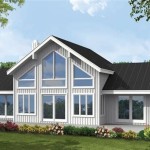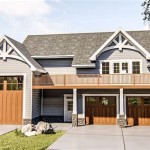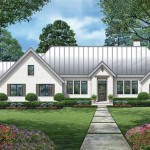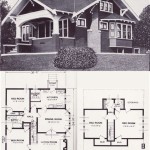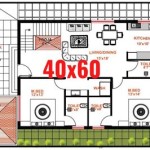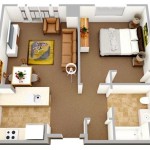Arts and Crafts Style Floor Plans: A Timeless Appeal
The Arts and Crafts movement emerged in the late 19th and early 20th centuries as a reaction to the mass production and ornamentation of the Victorian era. It emphasized simplicity, craftsmanship, and a connection to nature. These principles are beautifully reflected in Arts and Crafts style houses, and their floor plans embody the movement's ideals.
Key Characteristics of Arts and Crafts Floor Plans
- Open and Flowing: Arts and Crafts houses typically have open floor plans that allow for a seamless transition between living areas. This design fosters a sense of community and encourages family gatherings.
- Natural Light and Ventilation: Large windows and doors bring natural light into the rooms, creating a bright and airy atmosphere. The emphasis on ventilation ensures that the air is healthy and fresh.
- Craftsman Details: Intricate woodwork, handcrafted tiles, and other artisan details add character and warmth to Arts and Crafts homes. These elements are showcased in built-in furniture, window trim, and decorative moldings.
- Functional Storage: Thoughtful storage solutions, such as built-in cabinets and window seats with drawers, maximize space and keep the home organized.
- Transitional Spaces: Arts and Crafts floor plans often incorporate transitional spaces, such as mudrooms, sunrooms, or porches. These areas provide a buffer between the outdoors and indoors, as well as a place to pause and appreciate the surroundings.
The Bungalow: An Iconic Arts and Crafts Style
The bungalow is a quintessential Arts and Crafts style home. It is characterized by its low-slung profile, overhanging eaves, and open floor plan. Bungalows are typically single-story homes with a central living area surrounded by bedrooms and bathrooms. They often feature a fireplace as a central gathering point and cozy built-in seating.
Modern Adaptations of Arts and Crafts Floor Plans
While Arts and Crafts style homes remain popular, modern architects have adapted the movement's principles to create contemporary designs. These adaptations may include:
- Larger Windows: Today's Arts and Crafts homes often have larger windows than their predecessors, allowing for even more natural light.
- Sustainable Materials: Environmentally friendly materials, such as recycled wood and low-VOC paints, are used to create sustainable homes.
- Smart Home Technology: Arts and Crafts floor plans can be integrated with smart home technology for convenience and energy efficiency.
- Customizable Designs: Modern architects offer customizable designs that allow homeowners to tailor their Arts and Crafts home to their specific needs and preferences.
Conclusion
Arts and Crafts style floor plans embody the movement's principles of simplicity, craftsmanship, and connection to nature. Their open and flowing designs, natural light, and craftsman details create a timeless appeal that continues to inspire homeowners and architects alike. Whether it's a historic bungalow or a modern adaptation, an Arts and Crafts home offers a sense of warmth, comfort, and enduring style.

Bungalow Floor Plans Style Homes Arts And Crafts Bungalows Craftsman House

Craftsman Style House Plans Big And Small Houseplans Blog Com

Craftsman Style House Plans With Bungalow Features

House Floor Plans 1910s 1930s Bungalow Craftsman

Bungalow Floor Plans Style Homes Arts And Crafts Bungalows House

The Varina 1920s Bungalow 1923 Craftsman Style From Standard Homes Company Hous House Plans

1922 Craftsman Style Bunglow House Plan No L 114 E W Stillwell Co

Informally Elegant 4 Bed Craftsman Style House Plan 710069btz Architectural Designs Plans

Affordable Exclusive Craftsman Style House Plan 9081

Durham Drive Craftsman House Plans Ranch

